The “I” in ILX Does NOT Stand for Integra
By John Gilbert
SCOTTSDALE, ARIZONA — Acura is introducing a new, entry-level ILX sedan for the 2013 model year, a good-looking sedan that will fit in below the luxury RL , the smaller entry-luxury TL, and the midsize TSX in Acura’s stable.
To me, it was a cause for celebration, because I thought Acura had made a mistake when it discontinued the Integra, a sporty, entry-level sedan, back in the mid-1990s, and the new ILX might be a worthy replacement. At the introductory press conference, I raised my hand and asked if it would be logical to consider the ILX as being what the previous Integra might now be. Acura officials were emphatic to say there was no connection or resemblance to the long-gone Integra, as if they thought my question was an insult.
The new generation of Acura engineers needn’t be so sensitive; I meant the resemblance as a compliment. To humor those corporate officials, let’s just say the replacement of a Civic-based, sporty, high-mileage, entry-level sedan from a decade ago with an all-new Civic-based, sporty, high-mileage, entry-level sedan is merely a coincidence. When a coupe is added in a year or two, that will be coincidence, too.
There is nothing aged about the ILX. I like the design, particularly the pinched center of the lower fascia that comes up to meet the bumper. Models will be simple to differentiate, with really only one car, separated by option packages.
The base “Standard” is powered by a 2.0-liter 4-cylinder with 150 horsepower and 140 foot-pounds of torque and a 5-speed automatic, and Acura’s first-ever Hybrid, with basically the same 1.5-liter with Lithium Ion battery pack from the Honda Civic Hybrid is an available option. Moving up is the Premium package, with either the 2.0 or the TSX’s hot 2.4-liter twin-cam engine with 201 horsepower and 170 foot-pounds of torque. Top of the line is the Technology package, which has either the 2.0 or the Hybrid — which combines 91 horsepower from a 1.5-liter 4 and 23 electrical horsepower from the Lithium-Ion battery pack for a combined 114 horsepower and 127 foot-pounds of torque, and adds all sorts of premium features.
The base car starts at $25,900, and includes keyless access and ignition, power moonroof, Bluetooth wireless telephone interface, dual-zone climate control, USB with iPod and iPhone compatibility with text-message capability, and Pandora internet radio. The Premium package boosts the price to $29,200, and with the 2.4-liter engine is the hot-rod of the group, with a 6-speed manual transmission; it has all the base car’s standard features plus the Premium package’s leather interior, heated front seats, 8-way power driver’s seat, high-intensity headlights, and foglights. The Technology model adds Acura navigation with voice recognition and real-time traffic and weather, the Panasonic ELS 365-watt, 10-speaker surround audio, a GPS, and a solar-sensing climate-control system.
There is no separate Technology model, but the car with everything would be the Hybrid version, starting at $28,900, including all the Premium package features, plus the high-mileage gas-engine/battery-pack system. Fuel economy estimates from the EPA show 24 city/35 highway for the 2.0, 22/31 for the 2.4, and 39/38 for the Hybrid.
While the styling of the ILX may not cause people on the sidewalks to snap their heads and point, it is an attractive car. During initial test-drives, I found the mainstream 2.0 with its 5-speed automatic to handle all normal driving circumstances with ease. The engine is basically the 1.8-liter Civic engine with displacement enlarged to 2.0, and if the 5-speed is outdated by competitors’ rush to 6-speed automatics, the ILX has a distinct advantage over some of them by installing remote paddles on either side of the steering wheel, with the left for manually overriding for downshifts and the right for upshifts for sportier gear-changes.
A brief drive in the 2.4 with its dual-overhead-camshafts and 6-speed stick indicates that buyers who remember the sportiness of that late, lamented Integra (by me), or want something a bit more refined than the Civic Si — which has the same drivetrain — have found a new potential favorite.
The Hybrid was the car my partner and I chose first, to get a feel for how it would handle both in-town and highway driving. The Hybrid runs on a combination of the gas and electric power, and the battery pack is recharged by the gas engine as well as braking friction as regenerative. My driving partner is more “old-school,” who prefers to drive a Hybrid just like any other car, and calculate how it measures up to traditional driving habits, whereas I tend to try to drive to the Hybrid’s strengths, by not accelerating a hard and trying to anticipate stoplights better to make use of regenerative braking power feedback.
The reason that the Hybrid — like the Toyota Prius — gets better gas mileage in city or congested driving than while freeway cruising is that the gas engine shuts off when you stop at a red light, and if the battery pack is fully charged, driving in the 10-45 mph range will be predominately done by the electric power. Both sources work for start-up acceleration, or when accelerating briskly anytime, and the gas engine takes over primary power duties during gentle acceleration or high-speed cruising. The Hybrid has a CVT (continuously variable transmission), which tends to drone a bit compared to a normal shifting transmission, and it is less conducive to aggressive driving.
Obviously, changing driving habits can have an immediate impact on Hybrid fuel economy. I drove first and really tried to be conservative and anticipate every stop on a brief urban and suburban stretch, with modest acceleration at best, and I recorded a spectacular 49.9 miles per gallon. When we got out into more open spaces, and I was driving 65-70 mph over some hilly terrain, my fuel economy was still good at 43.6. After we switched drivers, and my partner drove considerably harder, I checked the fuel computer and it showed 35.5 mpg.
All the ILX models handled impressively, with good directional stability and responsiveness to the quick-ratio power steering. Handling is aided by 62 percent of the body surrounding the passenger compartment made of high-tensile steel, with an aluminum hood. That gives the ILX good torsional rigidity without excess weight, and helps the suspension and slick aerodynamics aid stability. The McPherson strut front and multi-link rear geometry is aided by dual-action, “amplitude reactive” dampers front and rear, which uses a second valve on the piston inside the shock to react to severe bumps after the first one handles smaller and more normal irregularities. In addition, the ILX combines skid control with an overriding understeer and centering control to help in cornering on slippery surfaces.
The whole Acura line started life in 1986, after Honda had established itself as a strong and high-tech force on the American auto scene. The company realized that Honda owners might progress from a Civic or two to an Accord or two, but when they progressed further and wanted to spend more for more prestigious cars, they had to turn to European brands. That’s how Acura was born, in 1986, with a new array of cars that would keep Honda buyers in the family.
The mainstay of the early Acuras was the Legend, a luxuriously appointed car that was definitely an upgrade from the Honda Accord but reasonably priced, and powered by a new V6. To be housed in separate dealerships, Acura needed more models, so an entry-level sedan was also offered — the Integra. For good measure, Acura also was given the incomparable NSX, a two-seat, mid-engine sports car that was an exotic car that never needed maintenance, an unheard of compromise.
The Integra, for my money, was the corporate prize, however. Low and sleek, and in both 4-door hatchback and 2-door coupe form, the 1986-89 Integra was much more than a Honda Civic, more sporty than an Accord, and more versatile than most station wagons.
Our family purchased a 1989 Integra 5-door, and we enjoyed the high-revving 4-cylinder and the stick shift, and it was the ideal family runabout that combined fuel-efficiency and sporty performance for about five years. The Integra was redesigned for 1990, a little bigger, and smoother, and it continued to be an over-achieving car until Honda discontinued it.
The Integra is long gone, remember, and long live the ILX. The new car ILX is entirely new from wheels to roof, and its shapely body and interior amenities included. With prices under the RL, TL, and TSX, the ILX should be a big attraction for Acura showrooms. It will be impressive to anyone who looks at it, and more impressive to those who take one for a test drive — especially those of us who fondly remember the Integra.
Comments
Tell me what you're thinking...
and oh, if you want a pic to show with your comment, go get a gravatar!


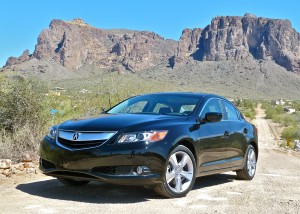
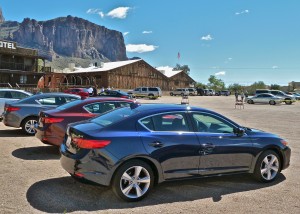
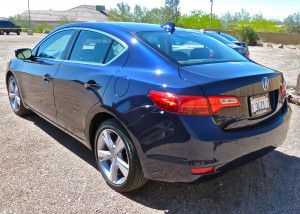
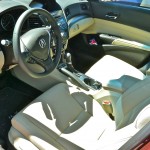
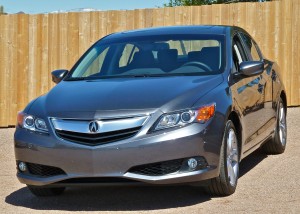
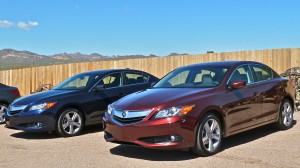
 John Gilbert is a lifetime Minnesotan and career journalist, specializing in cars and sports during and since spending 30 years at the Minneapolis Tribune, now the Star Tribune. More recently, he has continued translating the high-tech world of autos and sharing his passionate insights as a freelance writer/photographer/broadcaster. A member of the prestigious North American Car and Truck of the Year jury since 1993. John can be heard Monday-Friday from 9-11am on 610 KDAL(www.kdal610.com) on the "John Gilbert Show," and writes a column in the Duluth Reader.
John Gilbert is a lifetime Minnesotan and career journalist, specializing in cars and sports during and since spending 30 years at the Minneapolis Tribune, now the Star Tribune. More recently, he has continued translating the high-tech world of autos and sharing his passionate insights as a freelance writer/photographer/broadcaster. A member of the prestigious North American Car and Truck of the Year jury since 1993. John can be heard Monday-Friday from 9-11am on 610 KDAL(www.kdal610.com) on the "John Gilbert Show," and writes a column in the Duluth Reader.